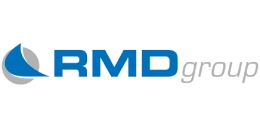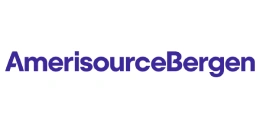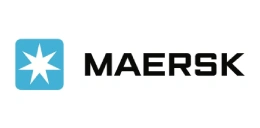Battery Recycling Cost Model: End-of-Life Cost Dynamics
_11zon.webp)
Battery recycling is the collection, dismantling, and processing of used or end-of-life batteries to recover valuable materials and limit environmental threats. With the burgeoning exponential increase in electric vehicles (EV), renewable energy storage, and consumer electronics, the number of spent batteries has skyrocketed, necessitating recycling as a key component of the energy transition worldwide. Batteries hold metals like lithium, cobalt, nickel, manganese, and copper that are costly and limited resources. They have the potential to contaminate soil and water if disposed of improperly, but effective recycling can substantially reduce raw material mining and manufacturing expenses. The recycling of batteries usually involves collecting them, mechanical treatment, and chemical processing to extract usable parts for the manufacture of new batteries. New technologies such as hydrometallurgical and direct recycling processes are enhancing the rates of material recovery and lowering emissions compared to traditional pyrometallurgical processes. Battery recycling not only reduces pollution and waste but also enhances resource circularity, allowing for the reuse of key minerals in new applications of energy storage. Manufacturers and governments are more and more adopting recycling in supply chains to guarantee material sustainability and environmental compliance. As demand for lithium-ion batteries ramps up around the world, recycling batteries is evolving from a specialty waste management option to a strategic cornerpost of the clean energy economy. The global battery recycling market reached a value of USD 16.8 Billion in 2024. According to IMARC Group, the market is projected to reach USD 32.7 Billion by 2033, at a projected CAGR of 6.88% during 2025-2033. A variety of interrelated economic, environmental, and policy drivers are propelling the global battery recycling market. The first and most prominent driver is the explosive growth in electric vehicle (EV) uptake, which is producing a wave of end-of-life lithium-ion batteries. More than 14 million EVs were sold in 2024, according to the IEA, creating a huge future wave of battery material to be recycled. Two, regulations by governments and policies for extended producer responsibility (EPR) are compelling companies to adopt closed-loop battery waste management systems. The European Union's Battery Regulation (2024), for example, requires minimum recovery rates of lithium, cobalt, and nickel, which will have an influence on recycling investments worldwide. The second key driver is the increasing cost and lack of availability of raw materials like lithium and cobalt, which are geopolitically intense areas of concentration in countries like the Democratic Republic of Congo and Chile. Recycling offers a cost-effective option by mitigating virgin mining dependence. Advances in technology, such as automated dismantling, direct cathode regeneration, and environmentally friendly hydrometallurgical processes, are improving recovery efficiency and commercial viability. Further, increasing consciousness of sustainability and carbon reduction targets is also encouraging battery producers and energy operators to blend recycled content in new cells. Strategic partnerships between recyclers, vehicle manufacturers, and materials suppliers like the ones among Redwood Materials, Li-Cycle, and Umicore are enhancing supply chain resilience. All these drivers combined are placing battery recycling at the center of the circular economy enabler as the industry is set to grow significantly in tandem with the global electrification trend.
Trending Insights on Battery: Latest News and Developments:
- In September 2025, Ascend Elements announced producing >99% pure, recycled lithium carbonate (Li2CO3) from black matter for the first time on a commercial scale, marking a key milestone in domestic essential minerals recovery. During the recycling process, black mass, a dark, powdery substance, is extracted from used lithium-ion batteries.
- In July 2025, Fortum Battery Recycling has been awarded EUR 84.6 million by Business Finland to expand its hydrometallurgical battery recycling facility in Harjavalta, Finland. The funding is awarded based on actual costs incurred and is contingent upon the project's ongoing success.
- In April 2025, Redwood Materials, founded by former Tesla CTO JB Straubel, has announced the opening of a state-of-the-art 15,000-square-foot research and development centre in San Francisco. This strategic investment, which has been in operation since April 10, 2025, puts the company in a position to enhance domestic supply chains for essential battery materials and expedite the development of sustainable battery technology.
Case Study on Cost Model of Battery Recycling Plant:
One of our clients reached out to us to conduct a feasibility study for setting up a medium scale battery recycling plant. We developed a comprehensive financial model for the setup and operation of a proposed battery recycling plant in India. This plant is designed to recycle 2,000 tons of end-of-life batteries annually.
Recycling Process: Battery recycling is a multi-step operation intended to reclaim valuable metal and parts from end-of-life or spent batteries, with minimal environmental effect. The operation starts with collection and sorting, whereby spent electric vehicle, consumer electronics, and industrial system batteries are collected and sorted by chemistry like lithium-ion, nickel-cadmium, lead-acid, or nickel-metal hydride, as each has different treatment processes. Sorted batteries are disassembled and discharged to remove any remaining energy and casings, electrodes, and internal parts in a safe manner. The cells are then treated using mechanical shredding or crushing under controlled conditions to shred them into smaller parts and trap harmful gases or electrolytes. Shredded output referred to as "black mass" comprises crucial materials like lithium, cobalt, nickel, manganese, and graphite. This black mass is processed through hydrometallurgical or pyrometallurgical treatments. Pyrometallurgy involves smelting at high temperatures to differentiate metals according to melting points. Hydrometallurgy involves chemical leaching and precipitation methods that selectively extract metals with the help of acids or solvents, and this process is increasingly becoming popular owing to increased recovery and lesser emissions. Recovered metals are then recycled and purified for reuse in new battery manufacturing, with residual plastics, aluminum, and copper being recycled or repurposed. Advanced recyclers are increasingly turning to direct recycling techniques to recover cathode materials without disassembling them into their elemental components, raising efficiency even further. Along the way, rigorous environmental and safety controls are maintained, enabling a circular economy that minimizes reliance on virgin mining and reduces the carbon footprint of the world's battery supply chain.
_11zon.webp)
Raw Material Required:
The basic raw materials required for battery recycling include:
- End of Life Batteries (EOLs)
- Acids (Sulfuric Acid, Hydrochloric Acid) Reducing Agents
- Solvents
- Precipitants (Sodium Carbonate, Sodium Hydroxide and Ammonium Hydroxide)
Machineries Required:
- Collection & Transportation- Battery Transport Containers (Un-Approved, Fire-Resistant)
- Forklifts / Pallet Jacks
- Tracking Systems for Hazardous Materials; Battery Discharge / Conditioning- Battery Discharge Stations
- Resistors Or Electronic Load Systems
- Cooling Systems; Battery Dismantling / Module Separation- Robotic/Manual Disassembly Stations
- Screwdrivers
- Hydraulic Cutters
- Shears
- Insulated Handling Tools (Gloves, Mats); Shredding / Crushing / Size Reduction- Industrial Shredders / Hammer Mills
- Granulators
- Magnetic Separators (Remove Steel Parts)
- Eddy Current Separators (Remove Aluminium)
- Air Classifiers (Separate Light Plastics/Fibers); Pyrometallurgical / Hydrometallurgical Processing- Pyrometallurgy- High-Temperature Furnaces (Electric Arc / Rotary)
- Flux Addition Systems (Limestone, Silica)
- Off-Gas Treatment Systems (Scrubbers)
- Hydrometallurgy- Leaching Tanks / Reactors (With Stirrers Temperature Control)
- Filtration Units (Pressure Filters, Vacuum Filters)
- Solvent Extraction Columns
- Precipitation Tanks
- Ph Adjustment Systems; Separation & Recovery- Filtration Units (For Solids Removal)
- Evaporators / Crystallizers (Li Carbonate, Li Hydroxide)
- Dryers (Tray Dryers, Vacuum Dryers)
- Electrowinning Cells (For High-Purity Metals); Waste Treatment & Effluent Management- Neutralization Tanks
- Effluent Treatment Plant (ETP)
- Air Scrubbers
- Solid Waste Presses; Quality Control & Product Handling- Analytical Labs (Icp-Oes, Aas, Xrf)
- Sampling Stations
- Packaging Units for Recovered Metals.
Techno-Commercial Parameter:
- Capital Expenditure (CapEx): Capital expenditure (CapEx) in a recycling plant includes various investments essential for its setup and long-term operations. It covers machinery and equipment costs, including procurement, installation, and commissioning. Civil works expenses involve land development, factory construction, and infrastructure setup. Utilities such as power, water supply, and HVAC systems are also significant. Additionally, material handling systems, automation, environmental compliance, and safety measures are key components. Other expenditures include IT infrastructure, security systems, and office essentials, ensuring operational efficiency and business growth.
- Operating Expenditure (OpEx): Operating expenditure is the cost incurred to operate a recycling plant effectively. Opex in a recycling plant typically includes the cost of raw materials, utilities, depreciation, taxes, packing cost, transportation cost, and repairs and maintenance. The operating expenses are part of the cost structure of a recycling plant and have a significant effect on profitability and efficiency. Effective control of these costs is necessary for maintaining competitiveness and growth. Furthermore, reagents and consumables cost in a battery recycling plant ranges between 35-40%, utility cost ranges between 20 to 25%, and all other costs ranges between 35-45% in the proposed plant.
- Profitability Analysis Year on Year Basis: We assisted our client in developing a detailed cost model, which projects steady growth, with revenue rising throughout the projected period. Moreover, gross profit margins lie between a range of 10-15%, and net profit lie between the range of 5-10% during the income projection years, highlighting strong financial viability and profitability.
Conclusion:
Our financial model for the battery recycling plant was meticulously developed to meet the client’s objectives, providing an in-depth analysis of production costs, including raw materials, recycling, capital expenditure, and operational expenses. By addressing the specific requirements of recycling 2,000 tons of end-of-life batteries annually, we successfully identified key cost drivers and projected profitability, considering market trends, inflation, and potential fluctuations in raw material prices. This comprehensive financial model equipped the client with valuable insights into strategic decision-making, demonstrating our commitment to delivering high-quality, client-focused solutions that ensure the long-term success of large-scale recycling ventures.
IMARC's Financial Model Expertise: Helping Our Clients Explore Industry Economics:
IMARC is a global market research company that offers a wide range of services, including market entry and expansion, market entry and opportunity assessment, competitive intelligence and benchmarking, procurement research, pricing and cost research, regulatory approvals and licensing, factory setup, factory auditing, company incorporation, incubation services, recruitment services, and marketing and sales.
Under our factory setup services, we assist our clients in exploring the feasibility of their plants by providing comprehensive financial modeling. Additionally, we offer end-to-end consultation for setting up a plant in India or abroad. Our financial modeling includes an analysis of capital expenditure (CapEx) required to establish the recycling facility, covering costs such as land acquisition, building infrastructure, purchasing high-tech production equipment, and installation. Furthermore, the layout and design of the factory significantly influence operational efficiency, energy consumption, and labor productivity, all of which impact long-term operational expenditure (OpEx). So, every parameter is covered in the analysis.
At IMARC, we leverage our comprehensive market research expertise to support companies in every aspect of their business journey, from market entry and expansion to operational efficiency and innovation. By integrating our factory setup services with our deep knowledge of industry dynamics, we empower our clients to not only establish recycling facilities but also strategically position themselves in highly competitive markets. Our financial modeling and end-to-end consultation services ensure that clients can explore the feasibility of their plant setups while also gaining insights into competitors' strategies, technological advancements, and regulatory landscapes. This holistic approach enables our clients to make informed decisions, optimize their operations, and align with sustainable practices, ultimately driving long-term success and growth.
Our Clients
Contact Us
Have a question or need assistance?
Please complete the form with your inquiry or reach out to us at
Phone Number
+91-120-433-0800+1-201-971-6302
+44-753-714-6104










